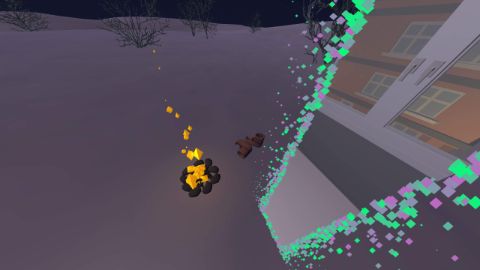Part of the Fabric of the Universe, and in a Particular Position to Marvel at its Great Beauty
Panel Discussion with Sammy Baloji, Outi Laiti, and Marisa Duarte, moderated by Karen Hao
Panel discussion
Sun., 30.7.2023
17:00–18:30
Safi Faye Hall
in English with simultaneous German translation
Free entry

Lost Memories (still) Horatiu Roman, Milan Grajetzki, Shailesh Prabhu, Julia Rässa, Mikael Latva, Outi Laiti, 2018
AI creates worlds. But AI is also adapted, appropriated, and altered in the context in which it is deployed through the human—made up of structures and materials of the world, yet created to stand apart from it. Like humans, AI is connected and dependent on land, extracting from and exploiting it. Despite all its potential harms, AI is a modality, a subset of questions and materials that can be used to design, redesign, and become involved in the creation of worlds that are otherwise imposed. Bringing back the ‘natural’ world that ‘artificial’ frameworks seek separation from, the relationship between land and living is recentred and negotiated through infrastructures, games, and communication technologies.
How can AI—or technology in general—be mobilized to sustain and proliferate Indigenous and anti-colonial worldmaking practices? Following Indigenous philosophies, most recently articulated by artist/scientist Max Liboiron, we capitalize Land to understand it as a particular relation, a possibility that includes not only physical terrain, but also environmental, ethical, and spiritual dimensions. What relations to Land does AI sustain or make impossible? And how do Indigenous and anticolonial practice process the digital age to create or keep and protect Land?